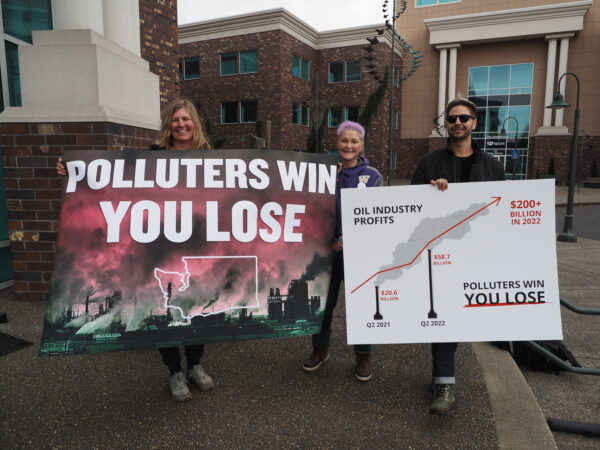“As organizations who have been working to protect the health of Washington’s environment for many years, we are deeply concerned by the new proposal to turn Cherry Point into the largest coal export facility on the West Coast,” said Joan Crooks, Executive Director of Washington Environmental Council. “Over the past two decades, we have dedicated substantial resources toward ensuring that the proposed export terminal at Cherry Point will not have irrevocable environmental impacts and we are concerned that this work is undermined by the use of the facility to export tens of millions of tons of coal annually to Asia.”
If the proposal went forward, 24 million tons of coal a year would be transported in open train cars from the Powder River Basin in Montana and Wyoming to Cherry Point, held in an open stockyard there, and then exported to Asia to be burnt. To transport the proposed amount, coal trains more than a mile long will pass through downtown Bellingham 18 times each day.
“If this proposal goes through, we will have three hours of coal trains rumbling through downtown Bellingham each day, essentially cutting the waterfront off from the rest of the city,” said Jayne Freudenberger, Co-President, League of Women Voters of Bellingham/Whatcom County. “Transporting millions of tons of coal on thousands of trains through our community will cause increased lung disease and other public health impacts, as well as undermine our economic prospects. This is a bad choice for Washington’s future.”
Reports from Burlington Northern Santa Fe Railroads show how coal dust flies off open train cars as they travel from the Powder River Basin and explains that 3% of coal is lost in transit. With the proposed 24 million tons each year being exported from Cherry Point, that means 720,000 tons of coal dust would be spread along the 1130 mile route from the Powder River Basin. That means up 240 lbs. of coal dust along every foot of the route each year. Studies from the U.S. Government have shown that coal dust can cause lung diseases from bronchitis to emphysema.
“The coal dust flying from train cars and blowing off stockpiles poses a serious threat to our health and environment,” said Paul Woodcock of the North Cascades Audubon Society. “Having worked so long to find a good solution at Cherry Point that protects the environment, this new coal export proposal is like a punch to the gut.”
The scope of the terminal has increased considerably from what was outlined in the original permit application – from 8 million tons to up to 54 million tons of total exports (while the deal for Peabody is currently for 24 million tons of coal, SSA Marine has acknowledged that the facility could handle up to 48 million metric tons of coal annually). In addition, the original permit for the terminal had listed items for export like wheat and wood chips – not coal.
“Given the expanded scope and impacts of this project, we think there needs to be a new and thorough review of the project,” said Dave Peeler, Director of Programs at People For Puget Sound. “Exporting tens of millions of tons of coal through Washington to be burned in China will have a host of environmental impacts not considered in the original process – from coal dust blowing through our communities to increased greenhouse gas emissions to mercury pollution in our water.”
Washington Environmental Council, League of Women Voters, North Cascades Audubon Society, and People for Puget Sound have all participated in litigation to ensure that any dock developed at Cherry Point is done in the best possible way for the environment. A settlement agreement was reached with SSA Marine in 1999 which provides substantial protections for herring and other aquatic resources.



